No-code Agency or In-house? Most Founders Get It Wrong
19 min
read
Struggling to choose between a no-code agency or in-house team? Discover key differences, pros, cons, and what most founders overlook before building
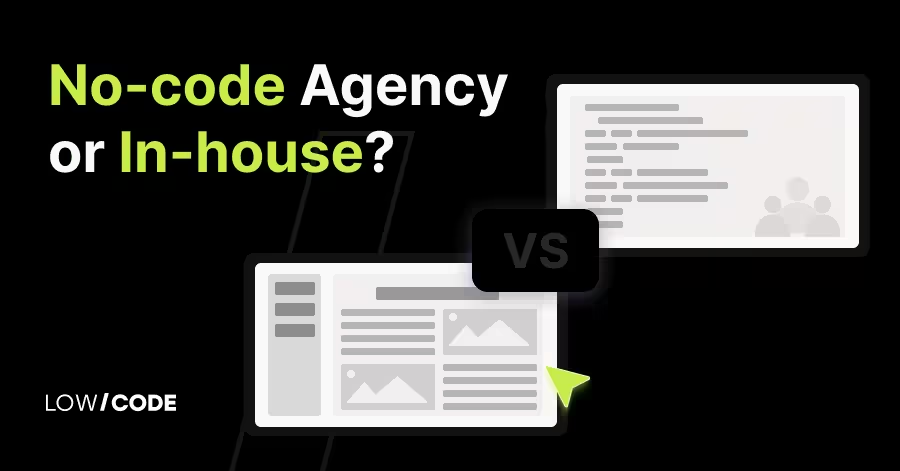
What is a No-code Agency?
A no-code agency is a specialized company that builds apps using platforms like Bubble, Glide, or FlutterFlow without relying on traditional coding. Unlike a single freelancer, these agencies provide a full-service team that usually includes designers, project managers, no-code developers, and automation experts.
This means you don’t just get an app — you get strategy, UX design, integrations, and long-term scalability baked into the process. No-code agencies are particularly valuable for startups or businesses that need to launch quickly and efficiently without the overhead of building an internal dev team.
With proven frameworks and industry experience, they help avoid common mistakes and deliver production-ready apps in weeks.
What is an In-house No-code Team?
An in-house no-code team means hiring staff or freelancers directly within your company to build and maintain apps. This could be a single no-code developer or a small group working under your management. While it offers more day-to-day control, it also places the burden of recruiting, training, and retaining talent on your business.
Many companies underestimate the learning curve, tool limitations, and hidden costs of maintaining in-house capacity. It works well for organizations with long-term app portfolios, but for most startups and SMEs, scaling an internal team is costly and slow compared to working with a no-code agency that already has the expertise, processes, and tools in place.
Read more | How to hire AI app developers
Cost Comparison Between No-code Agencies and In-house Teams
Budget plays a big role in deciding whether to hire a no-code agency or build an in-house team. Agencies provide flexible pricing, while in-house teams come with long-term commitments and overhead.
Are no-code agencies cost-effective for short-term or fixed-scope projects?
Yes, Most agencies start from around $20,000, with costs scaling based on app complexity. Pricing is often fixed or milestone-based, giving startups and small businesses predictable costs. Unlike hiring in-house staff, you don’t pay for training, benefits, or idle time.
This makes agencies an excellent fit for building MVPs, client portals, or one-off tools where speed and budget control are critical. By handling strategy, design, and development in one package, agencies allow founders to focus on growth while reducing financial risk.
Are in-house no-code teams more affordable in the long run?
Building an in-house no-code team requires higher upfront investment — recruitment, salaries, licenses for tools, and ongoing benefits. This can make sense if you’re developing and maintaining a large application or a portfolio of apps over years.
The advantage is greater control and long-term ownership, but costs add up quickly. Salaries alone often exceed what you’d spend with an agency, and scaling requires additional hires.
For most startups and SMEs, the cumulative cost of in-house teams outweighs the benefits. Agencies remain the smarter option for predictable, budget-friendly builds that don’t require maintaining a permanent team.
Read more | How to hire Bubble developers
Speed to Build and Launch a No-code App
Time-to-market is often the deciding factor when choosing between a no-code agency and an in-house team. Agencies are designed for speed, while in-house teams may face slower ramp-up times.
How fast can a no-code agency deliver your app idea?
A no-code agency can deliver MVPs in as little as 3–7 weeks because they follow predefined processes and frameworks built from experience. With designers, developers, and project managers already in place, they eliminate the delays of assembling and onboarding a team.
Their expertise allows for quicker iteration, fewer mistakes, and faster pivots when feedback comes in. This makes agencies ideal for startups facing deadlines, investor pitches, or product launches where speed-to-market matters most. Instead of experimenting, you get a clear path to a working, production-ready app.
How fast can an in-house no-code team build apps?
An in-house no-code team is slower in the early stages. The process of recruiting, hiring, and onboarding talent can take months. Even once onboard, new developers need time to learn company processes, tools, and culture. Productivity may improve over time, but projects often face delays if key team members are unavailable or leave unexpectedly.
While in-house teams may eventually gain speed, the initial lag makes them less suited for startups or businesses under tight timelines. Agencies, by contrast, bring immediate readiness and a proven track record of rapid delivery.
Read more | How to hire FlutterFlow developers
Comparing Talent and Platform Expertise
Expertise can make or break a no-code project. Agencies bring specialized, cross-platform knowledge, while in-house teams often start with limited skill sets and slower learning curves.
What kind of platform expertise do no-code agencies bring?
No-code agencies bring deep specialization in leading platforms like Bubble, FlutterFlow, and Glide. Their teams work across industries, which means they’ve seen recurring challenges and already built reusable logic patterns to solve them faster.
Beyond developers, agencies also provide project managers, UX/UI designers, and automation experts in one package — covering every angle of app development. This combination ensures that your app isn’t just functional, but also user-friendly, scalable, and future-proof.
With access to specialists who live and breathe no-code, you benefit from speed, quality, and a proven framework from day one.
Can in-house teams match agency-level skills?
In-house teams often begin with generalists or upskilled internal members, which limits the depth of expertise available. The learning curve can be slow, as developers experiment with platforms and discover limitations firsthand.
Most in-house teams focus on only one or two tools at a time, leaving gaps in flexibility when new requirements arise. Without exposure to multiple industries or complex use cases, they may struggle to create scalable and polished solutions.
While in-house talent can grow over time, it’s rare for them to match the breadth and specialization of a no-code agency that works on diverse, high-level projects daily.
Read more | How to hire mobile app developers
Control and Day-to-Day Collaboration
Control and communication are often deciding factors when choosing between a no-code agency and building in-house. Both models offer visibility, but the level of involvement differs significantly.
Do you get enough control and visibility with a no-code agency?
With a no-code agency, you get structured visibility through weekly check-ins, design previews, and milestone reviews. A dedicated project manager acts as your main point of contact, ensuring updates and feedback flow smoothly.
While you may not be involved in every daily detail, this setup prevents micromanagement and keeps projects moving efficiently. Agencies focus on balancing transparency with execution speed, allowing you to focus on business strategy while still having full visibility into progress. For most startups and SMEs, this structured approach provides the right level of control without slowing the build.
Is working with in-house teams more flexible?
An in-house no-code team offers closer, day-to-day collaboration. You can make quick adjustments, provide feedback in real time, and align development closely with brand and internal goals. Cross-department collaboration also becomes easier since the team is embedded in your company culture.
However, this flexibility comes with challenges — without the predefined processes of an agency, projects can sometimes drift, and progress may slow down due to constant input. While in-house teams provide tighter control, they require strong internal management to maintain efficiency and avoid bottlenecks.
Read more | How to hire no-code developers
Ongoing Maintenance and Post-launch Support
Launching an app is just the beginning — keeping it updated, secure, and user-friendly requires continuous effort. Both no-code agencies and in-house teams can handle this, but their approaches differ in flexibility and reliability.
Do no-code agencies handle bug fixes and updates after launch?
Yes, many no-code agencies provide post-launch support packages or retainers to handle bug fixes, feature updates, and performance monitoring. They also prepare clear documentation and handovers, making it easy for clients to manage small changes internally if needed.
This is especially valuable for businesses without technical oversight or IT staff, as agencies ensure the app stays functional and scalable.
With proven processes and familiarity with the platform, agencies can address issues proactively, reducing downtime and ensuring the product continues to deliver value beyond launch.
Can in-house teams manage maintenance better in the long term?
In-house teams give you full control over iterations, new features, and ongoing maintenance. Since they’re part of the company, they can act quickly on urgent updates and adjust based on evolving goals.
However, this model faces risks like knowledge drain if key developers leave, or inefficiency if processes aren’t well-managed. Many internal teams operate reactively rather than proactively, which can slow growth and reduce product quality over time.
While in-house control can be powerful, it requires consistent investment in staff, training, and retention to avoid gaps in support.
Read more | How to hire web app developers
Data Security, IP Ownership, and Compliance
Security and intellectual property are critical concerns for any business building apps. Both no-code agencies and in-house teams can deliver secure products, but the level of control and compliance depends on how the project is managed.
Are no-code agencies safe to use for secure or sensitive apps?
Yes, but it depends on the agency’s expertise and the platform chosen. A reliable no-code agency should have experience working with compliance standards like HIPAA, GDPR, or SOC 2. Strong contracts, NDAs, and clear IP agreements protect your ownership rights.
Most no-code platforms, such as Bubble or Glide, offer built-in encryption, SSL, and access control, though the depth of security differs across tools.
The key is vetting both the agency and the platform to ensure they align with your data protection and regulatory needs, especially for sensitive industries like healthcare or finance.
Do in-house teams offer stronger IP control and data protection?
In-house teams provide direct access to your app logic, codebase, and databases, giving you maximum control over intellectual property. This setup makes it easier to align with internal IT policies, custom security measures, and strict compliance requirements.
Enterprises or businesses in legal-heavy sectors often prefer in-house development because it guarantees that data never leaves their controlled infrastructure.
While this model ensures stronger ownership, it comes at the cost of higher staffing, infrastructure, and compliance management expenses. It’s best suited for organizations where data protection is mission-critical and worth the added investment.
Read more | Build Marketplace Platform Guide
Scaling Apps and Teams with No-code
Scalability is not just about the app — it’s also about how fast your team can adapt to new demands. No-code agencies offer flexibility for rapid growth, while in-house teams face resource limits when scaling.
Are no-code agencies scalable for multi-phase projects or rapid growth?
Yes, no-code agencies are highly scalable for multi-phase projects. They can quickly ramp up or down depending on your needs, making them ideal for iterative builds like v1, v2, and beyond. Agencies are experienced in sprint-based workflows, which means they can deliver features in modular phases while maintaining momentum.
This flexibility is especially valuable for startups that need to scale fast or enterprises that want to expand tools across multiple departments. By partnering with a no-code agency, businesses can grow their apps without the delays of recruiting or training new staff.
Can in-house teams scale efficiently with growing product needs?
Scaling in-house teams is slower and resource-heavy. Hiring, onboarding, and training no-code developers can take weeks or months, limiting how quickly you can respond to growth.
Internal teams are bound by fixed capacity, and when workloads exceed bandwidth, companies often need to rely on freelancers or contractors for extra help. While this provides more control, it adds complexity and cost.
For organizations with unpredictable growth or multiple projects, scaling purely in-house often becomes inefficient compared to leveraging an agency’s flexible, ready-to-deploy talent pool.
Read more | No-code agency working process
Innovation and AI Use in No-code Development
AI is rapidly becoming a must-have in modern apps. No-code tools already integrate with AI services, but how effectively you leverage them depends on whether you work with an experienced agency or build in-house.
Do no-code agencies help you add AI features like GPT or OCR?
Yes, no-code agencies often bundle AI, automation, and analytics into their builds. Many have hands-on experience integrating OpenAI’s GPT models, OCR tools, or workflow automation platforms like n8n, Make, and Zapier. They can also connect custom APIs for specialized AI features, giving businesses a faster path to AI-powered apps.
With their cross-industry expertise, agencies know which use cases work best and how to avoid common pitfalls. This makes them particularly valuable for businesses that want to add innovation quickly without wasting time experimenting or troubleshooting integration issues on their own.
Can in-house teams implement AI and advanced workflows with no-code?
In-house teams can implement AI features, but success depends heavily on the team’s experience and willingness to experiment. Without dedicated research, skills often lag, and projects risk stagnating as AI technologies evolve. Adding advanced workflows like natural language processing, predictive analytics, or custom automation may stretch internal capabilities.
While it’s possible, it often takes longer and requires trial-and-error learning. This makes in-house teams less ideal for experimental or complex AI use cases. Agencies, on the other hand, bring tested methods and prebuilt solutions, ensuring innovation happens faster and with fewer risks.
Read more | How to build AI-driven Accountant App
Best Use Cases: When to Choose a No-code Agency or In-house Team
The decision between hiring a no-code agency or building in-house often comes down to urgency, scope, and long-term goals. Each path has unique advantages depending on your situation.
When should startups or businesses hire a no-code agency?
Startups and businesses should hire a no-code agency when facing urgent deadlines, such as preparing for investor pitches, launching MVPs, or meeting market windows.
Agencies excel when there’s no technical leadership in-house, providing full-service teams that cover design, development, and automation. With clear budgets and scopes, agencies deliver predictable outcomes and reduce risks of delays or overspending.
They also bring frameworks and best practices that ensure scalability beyond the prototype stage. For companies needing quick, reliable results, partnering with an agency is the fastest and most budget-friendly choice.
When is building an in-house no-code team the smarter choice?
An in-house no-code team makes sense for long-term products that need constant updates and deep integration with existing workflows or internal tools. If your company already has strong technical leadership to guide the process, hiring in-house developers provides tighter alignment with internal goals and brand culture.
Over time, maintaining a dedicated team can be cost-effective for businesses with multiple ongoing projects. However, this approach requires investment in recruitment, training, and retention. It’s best for established organizations with clear long-term strategies, where daily collaboration and control outweigh the need for speed and external expertise.
Final Verdict: No-code Agency or In-house Team?
There’s no single answer when choosing between a no-code agency and an in-house team—it depends on your goals, budget, and timeline. Agencies offer speed, specialized expertise, and predictable delivery, making them ideal for startups, SMEs, and businesses with urgent deadlines or limited technical leadership. They can launch MVPs and scalable apps in weeks while avoiding the overhead of hiring and training.
In-house teams, however, provide greater day-to-day control and tighter alignment with internal workflows, making them better for long-term projects that need constant iteration. Yet they often face slower ramp-up times and higher costs.
For many businesses, a hybrid approach works best: leveraging agencies for speed and early growth, then gradually building in-house capacity for ongoing updates. The smartest choice is to match your development strategy with your business stage and growth plans.
Created on
August 24, 2025
. Last updated on
November 18, 2025
.

FAQs
Are no-code agencies better for MVPs or full-scale apps?
Can in-house teams build apps using Bubble, Glide, or FlutterFlow?
Is it safe to give my app idea to a no-code agency?
How much does it cost to hire a no-code agency for a project?
Can I start with an agency and later move to an in-house team?
What are common mistakes founders make when hiring no-code teams?





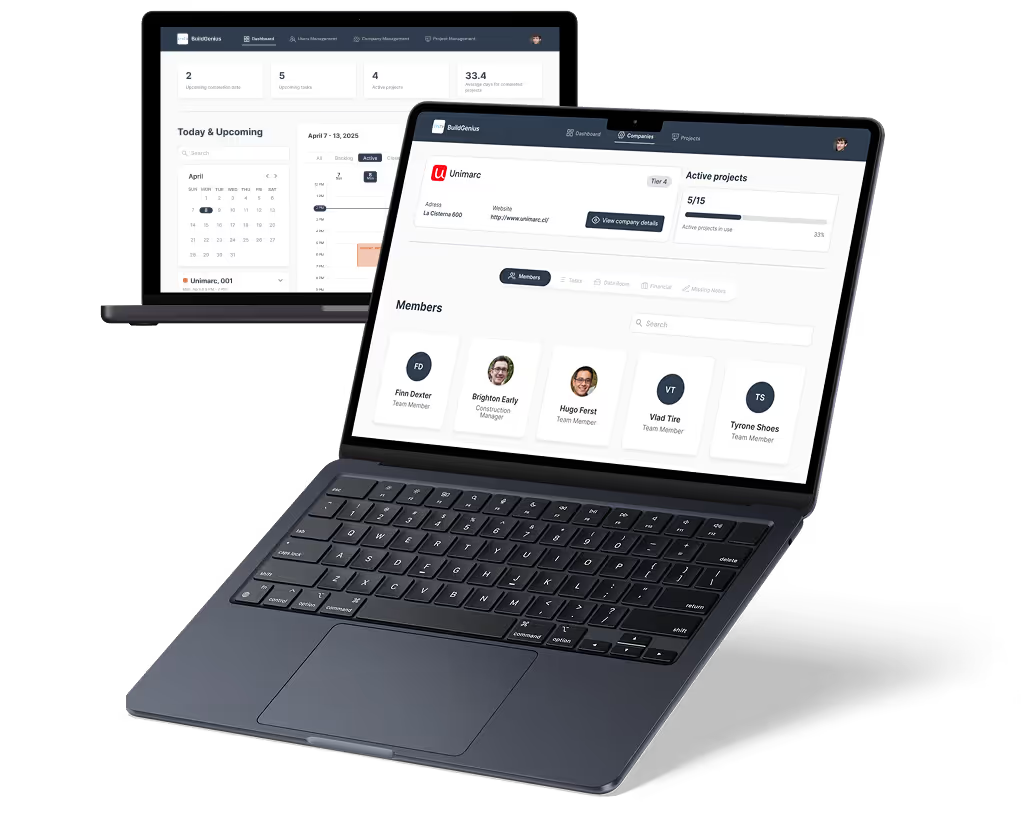

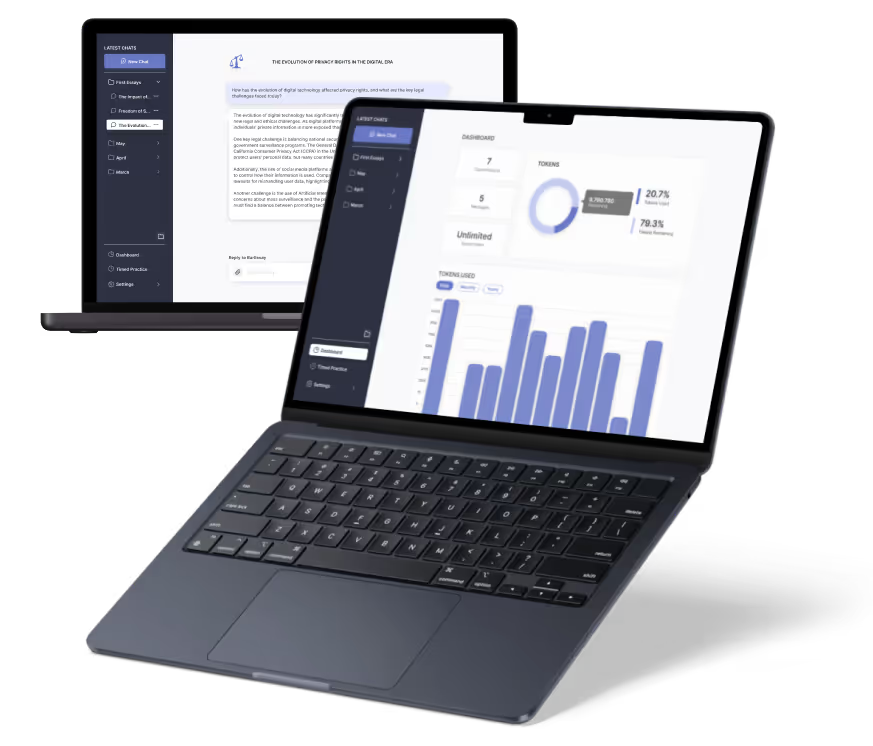
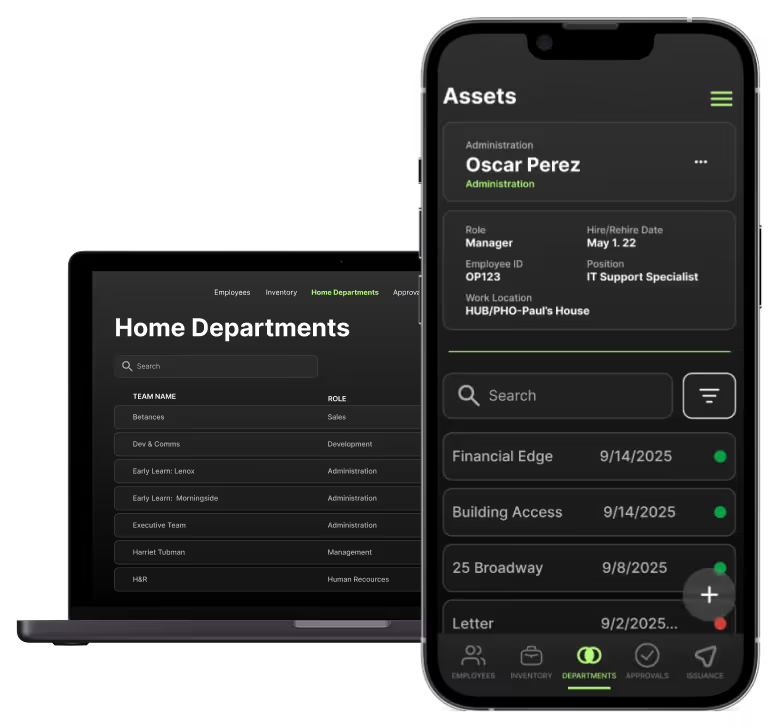
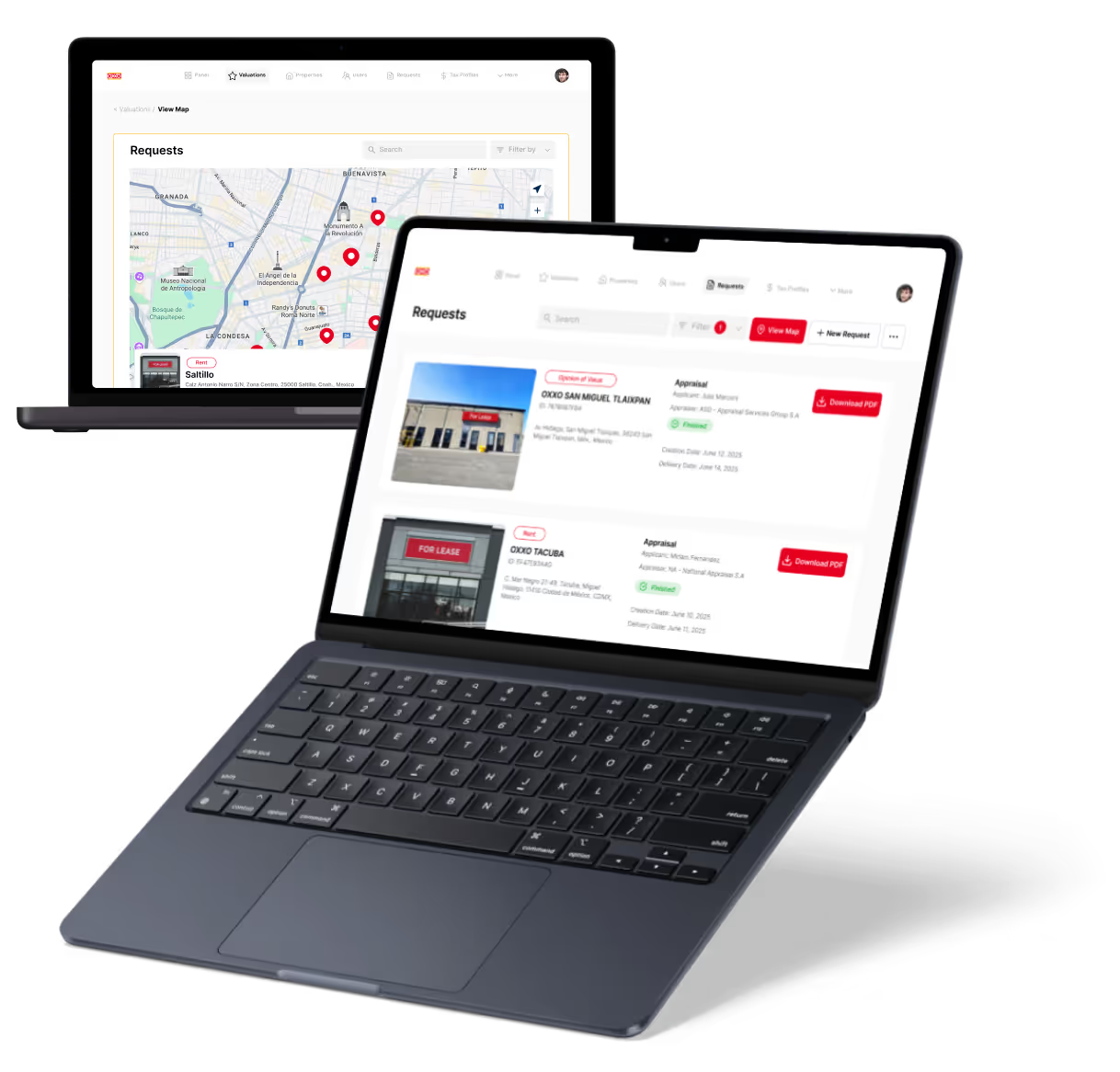
%20(Custom).avif)





![How to create an app without coding [2024] - A step-by-step guide](https://cdn.prod.website-files.com/61cbe22a00483909d327afc6/66393c22233f2e021d6b03d8_65eb47491f12048733942683_Slide%252016_9%2520-%25207.avif)


